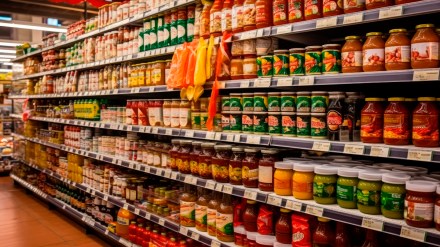Green shoots are becoming visible in FMCG consumption in urban areas after months of a slowdown, coming at a time when urban demand is improving on easing inflation and recent fiscal and monetary policy measures. Data from retail intelligence platform Bizom shows that urban FMCG sales growth by value was marginally ahead of rural value growth in Q1, which is the first in six quarters.
It stood at 7.7% in urban areas versus rural’s 7.1% in the quarter, driven by demand for branded commodities, personal care and dairy products.In the year-ago quarter, urban value growth was 5.8% to rural’s 11.7%, with overall FMCG value growth at 9%. In June quarter of current fiscal, overall FMCG value growth stood at 7.3%, with the trend expected to improve in the coming quarters, Bizom said.
The retail intelligence platform, which monitors FMCG orders at 8 million kiranas across the country, does not track volume growth.”Unseasonal rains hurt agricultural output in the June quarter. On the other hand, urban areas saw the initial benefits of tax cuts and interest rate reduction, which led to an improvement in sentiment during the June quarter,” Harshit Bora, head of analytics at Bizom, said.
Branded commodities, which was a key contributor to Q1 growth, surged nearly 23% in terms of sales value; dairy products grew 8.4% and personal care grew 5.1%, according to Bizom. Packaged food and beverages, meanwhile, grew 3.1% and 2.2% respectively in the quarter.Market researchers such as NielsenIQ, Kantar as well as FMCG companies have been alluding to an uptick in urban sentiment in Q1, thanks to the combined effort of the government and central bank to lift urban demand.
At the same time, benign commodity costs and the forecast of a good monsoon this year augurs well for the overall market, they said.”In the near to medium term, we should see an improvement in FMCG market conditions as macro-economic fundamentals improve. Reduced inflation, tax cuts, changes in monetary policy should benefit the economy as a result of which sentiment is likely to improve,” Nitin Paranjpe, chairman, Hindustan Unilever (HUL), said during the company’s annual general meeting (AGM) last week.
The companies, however, say that the rural growth engine is not slowing for them. If anything, it continues to outpace urban demand. “Rural India remained resilient, outpacing urban growth. At Dabur, we embraced this shift with agility,” company chairman Mohit Burman said on Wednesday.
Last week, Dabur along with peers such as Marico and Godrej Consumer (GCPL) said they were seeing an uptick in Q1 volume growth, led by rural recovery and stable demand trends across markets.”Key brands such as Dabur Red Toothpaste, Odonil, Odomos and Gulabari are expected to post strong growth coupled with market share gains. Within healthcare our brands such as Dabur Honey, Hajmola, Dabur Honitus and Dabur Health Juices are expected to post robust double-digit growth. Beverages, however, have been impacted by unseasonal rains and a shorter summer,” Dabur said in its Q1 update.
GCPL said volume growth in Q1 would be in mid-single digits including soaps. Excluding soaps, GCPL’s standalone business was likely to deliver a double-digit volume growth. Marico said that it saw Q1 volume growth at a multi-quarter high driven by positive trends in core franchises and continuous scale up of new businesses.“We believe for FY26, we are on track to deliver mid to high-single digit underlying volume growth for the standalone business, high-single digit consolidated revenue growth and double-digit consolidated Ebitda growth for the full year,” GCPL said.
Marico said that while vegetable oil prices had eased following the cut in import duty, crude oil derivatives were range-bound. And copra prices remained elevated.
